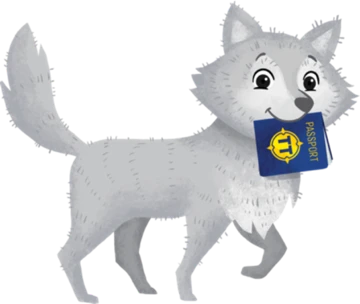Today, let’s learn a little bit about traditional textiles and clothing in Panama.
Specifically: Mola, which comes from Panama’s San Blas Islands.
Molas are a type of woven textile made by the women of the Kuna people in Panama’s San Blas Islands. The word mola actually has two meanings: it is a Kuna word for clothing but it also refers to an important type of textile that features colorful panels sewn by the women of the native Kuna people. Traditionally, molas depicted the geometric shapes women painted on their bodies in ancient times. Molas have such importance for the Kuna and their traditional identity that even the school children have mola patterns as part of their school uniform!
As you begin today’s project, you can look online by searching the term “Kuna Molas” for images of the traditional clothing of the Kuna women to see examples of what molas look like. You will also notice other beautiful details that complete the outfits, including a patterned wrapped skirt (saburet), a red and yellow headscarf (musue), arm and leg beads (wini), a gold nose ring (olasu) and earrings, and the mola blouse (dulemor).
Today, color a pattern to make your own paper mola! You can use your mola as a piece of artwork on your wall, or give it as a gift to someone you love!
Fun fact: Did you know? The tradition of molas as textiles go back to over 175 years!
Fun Fact: Did you know? The San Blas Islands are a group of islands in the archipelago de San Blas, located in the Northwest of Panama facing the Caribbean Sea. There are 378 islands within the San Blas archipelago. An archipelago is a group of islands surrounded by water.








